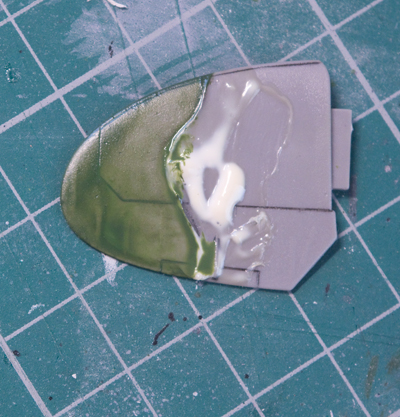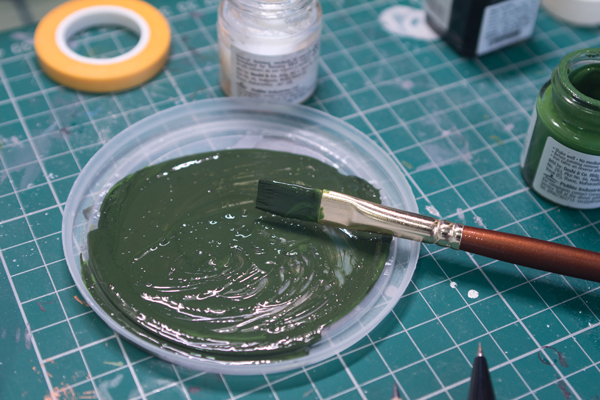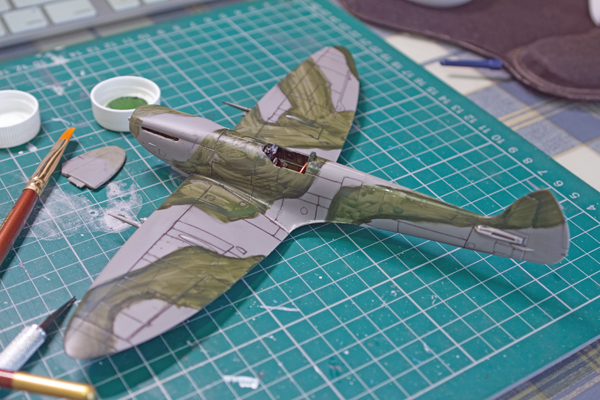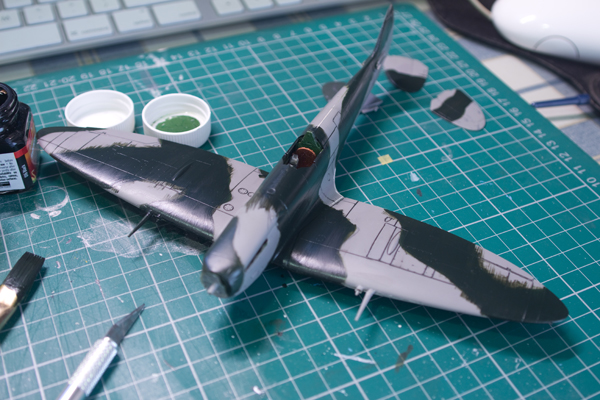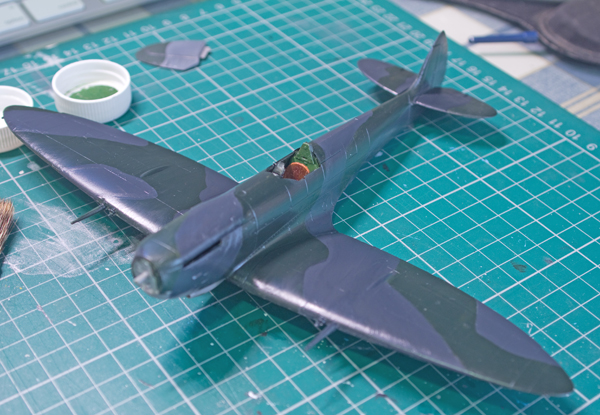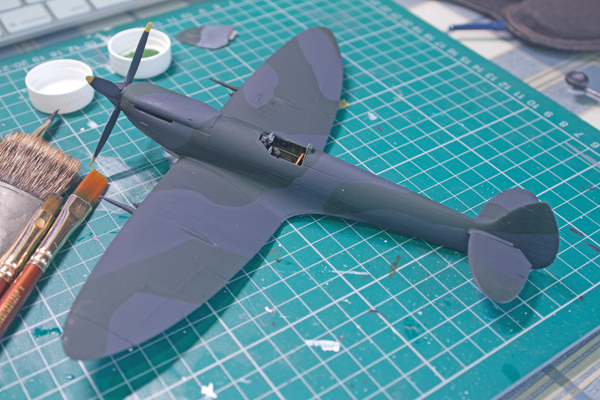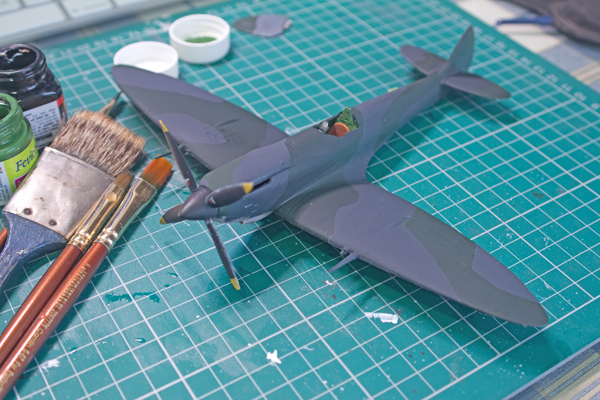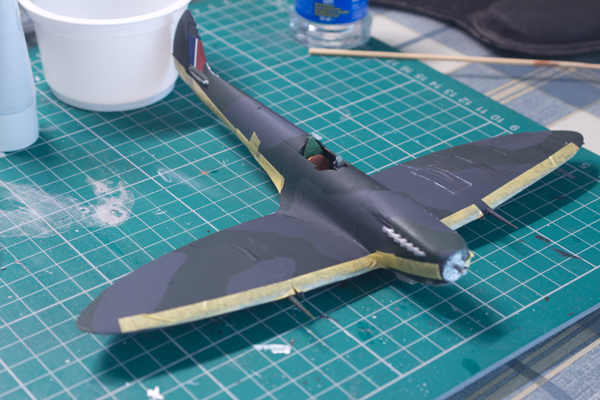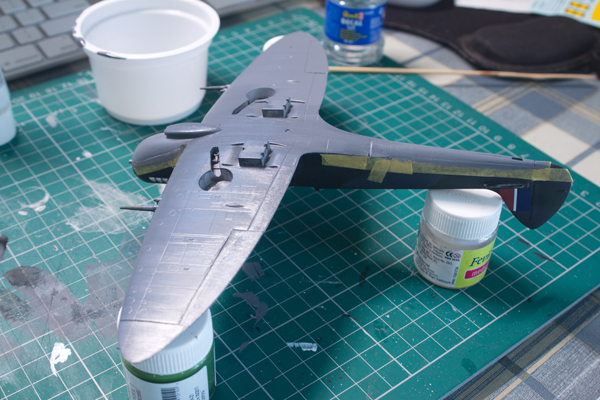Painting the camo pattern
One way to paint the camouflage is by using a liquid mask, also available at craft stores. These are a staple of watercolour artists and they do a good job of protecting the surface from acrylic (as seen here) or enamel paint too. I don’t like doing this as the paint tends to accumulate on the edge of the mask, leaving a nasty ridge demarcating the two colours, and that ruins the finish completely. So I paint the camouflage by hand.
Now, the goal is to eliminate brush strokes on our finish. So, I paint the camouflage with diluted paint using 5 coats. The formula here is, you paint each coat with the paint consistency matching that of the attached picture. The amount of dilution is a matter of judgement as well. The reason for this is that different pigments have different levels of adhesion to plastic. For example, black paint is the easiest to apply on plastic and leaves the least noticeable brush strokes. Therefore, you may find a black part attaining an acceptable finish after just 2 coats. But green paint is not as adhesive. Therefore, it takes 5 coats and a good amount of care to get a nice, consistent finish, especially on a large area. With each coat, the brush strokes get less apparent.
Eventually, we have a smooth finish. The first two coats will look absolutely horrendous. But the key here is patience. As we go along, the paint shall even out and the brush strokes shall be next to invisible. Also, you’ll hear many people tell you to use the largest flat brush you can find, but I find this to be rather short-sighted. Larger brushes also tend to deposit more paint in one stroke. Therefore, a very large brush like a size 10 may deposit too much paint and you’ll either be left with the paint dripping off the aircraft or pools of paint gathering at the contours of the body. To prevent this, I find a size 6 flat brush to be adequate. When painting the pattern, I try to paint using strokes that run in the direction of the airflow on the aircraft. This might seem daunting given the general haphazard nature of the camouflage pattern. You may even go over the lines, but it is excusable as you shall be painting over it using grey paint anyway. And grey paint does not require as many coats for a smooth finish so you can use slightly thicker paint.
